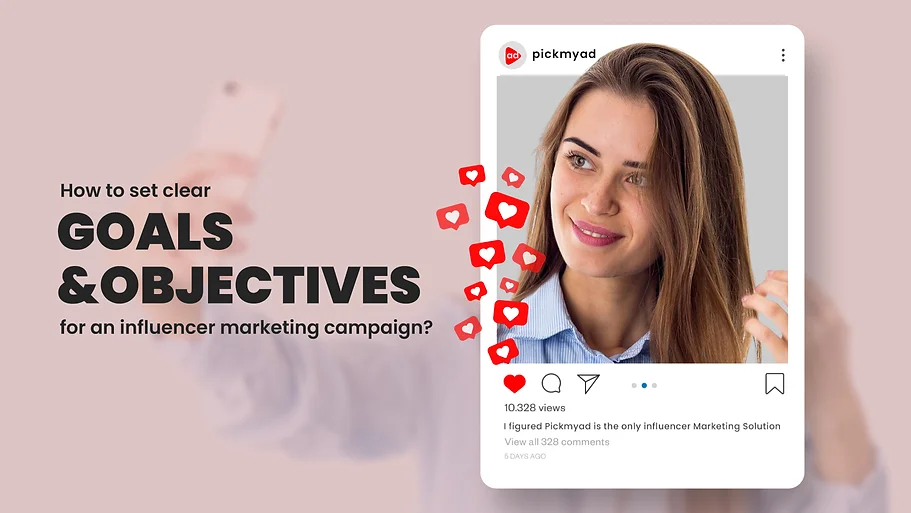Influencer marketing has become a powerful strategy for brands looking to connect with their target audience authentically. However, the effectiveness of an influencer campaign hinges on having well-defined goals and objectives. Here’s how to set clear and actionable goals to guide your influencer marketing efforts.
1. Understand Your Brand’s Needs
Before diving into goal-setting, take a step back to understand what your brand needs from the influencer campaign. Are you looking to increase brand awareness, drive sales, or boost engagement? Identifying these needs is the foundation for setting relevant goals.
- Brand Awareness: If your primary objective is to increase visibility, your goals should focus on metrics like reach, impressions, and follower growth.
- Lead Generation: For campaigns aimed at generating leads, focus on the number of new subscribers, inquiries, or downloads.
- Sales Conversion: If your goal is to drive sales, track metrics such as conversion rates, ROI, and sales revenue generated from the campaign.
- Engagement: If engagement is your priority, monitor likes, comments, shares, and overall interaction with your content.
2. Align with Broader Marketing Objectives
Your influencer marketing goals should align with your overall marketing strategy. This ensures that the campaign contributes to broader business goals, such as entering a new market, launching a product, or repositioning your brand.
For instance, if your broader marketing objective is to introduce a new product, your influencer campaign should focus on product awareness and generating initial reviews or testimonials.
3. Define Specific, Measurable Goals
Setting vague goals like “increase brand awareness” won’t give you a clear direction or a way to measure success. Instead, make your goals SMART (Specific, Measurable, Achievable, Relevant, and Time-bound).
- Specific: What exactly do you want to achieve? Example: Increase Instagram followers by 15%.
- Measurable: How will you track progress? Example: Use analytics tools to monitor follower growth.
- Achievable: Is this goal realistic? Example: Based on past campaigns, a 15% increase in followers is attainable.
- Relevant: Does this goal align with your broader marketing objectives? Example: Growing your Instagram following will help increase brand visibility.
- Time-bound: What is the deadline? Example: Achieve the follower growth within three months.
4. Identify the Right Influencers
Your goals will inform your choice of influencers. If your goal is to drive sales, you might opt for influencers with a strong track record of converting followers into buyers. For brand awareness, influencers with a large but relevant following might be more appropriate.
Consider metrics such as:
- Audience demographics: Ensure their followers match your target market.
- Engagement rate: High engagement often means more genuine interaction and influence.
- Content style: The influencer’s content should resonate with your brand’s voice and aesthetic.
5. Establish Clear Key Performance Indicators (KPIs)
Once you have your goals, determine the KPIs that will help you track progress. For example:
- Impressions: Number of times your content is displayed.
- Engagement Rate: Percentage of followers who interact with the content.
- Click-through Rate (CTR): The rate at which followers click on a link in the influencer’s post.
- Conversion Rate: The percentage of followers who make a purchase or complete a desired action.
These KPIs will provide tangible data to assess the success of your campaign and make necessary adjustments.
6. Plan for Continuous Monitoring and Optimization
Setting goals isn’t a one-time activity. As the campaign progresses, continuously monitor your KPIs and be ready to optimize. If an influencer’s content isn’t performing as expected, analyze why and make necessary adjustments.
- Regular Reporting: Set up weekly or monthly reports to track performance against your goals.
- A/B Testing: Test different approaches (e.g., different influencers, content styles) to see what works best.
7. Set a Clear Budget and Timeline
A well-defined budget ensures that your goals are realistic and achievable. Allocate your budget based on the goals—whether it’s for influencer fees, content creation, or amplification.
Additionally, set a timeline for each phase of the campaign, from planning to execution and analysis.
Conclusion
Setting clear goals and objectives is essential for the success of any influencer marketing campaign. By understanding your brand’s needs, aligning with broader marketing objectives, and defining specific and measurable goals, you can create a roadmap that leads to tangible results. Remember to continuously monitor, optimize, and adapt your strategy to ensure your campaign meets its objectives and delivers maximum ROI.


